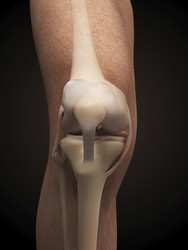Generating hope for millions of chronic pain sufferers
The degeneration of cartilage – the flexible connective tissue found in joints – is a major cause of chronic pain, mobility loss and reduced quality of life for millions of Europeans. There is at present no clinical therapy capable of fully healing cartilage defects, while current cartilage implants often do not adequately replicate normal cartilage function. Achieving cartilage regeneration rather than cartilage repair remains elusive. With an ageing population, this is a major healthcare and cost concern for the whole of Europe. The five-year EU-funded HYDROZONES project, which was launched in January 2013 and which will receive EUR 9.7 million in EU funding, aims to play a crucial role in tackling this challenge. The project intends to achieve this by regenerating cartilage through bio-functional hydrogel-based implants that accurately mimic the structure and function of human tissue. The team believes that they have made a breakthrough. Validation of the first hydrogel-fibre composites suggests that the new approach offers not only joint repair but also potential use in areas such as breast reconstruction following a post-tumour mastectomy and heart tissue engineering. The project began by looking at current cartilage implants. A key recurrent issue was the fact that these implants do not mimic the hierarchical tissue organisation that scientists believe is critical for normal cartilage function. The project team then set about developing new implants that replicate the behaviour and structure of human tissue, and which might actively encourage natural tissue regeneration. Restoring cartilage requires both flexibility and mechanical strength. For this reason, HYDROZONES researchers investigated the possibility of combining 3-D printed microfibre scaffolding with hydrogels. To do this, the project has pioneered a new 3-D printing technique, which offers more freedom in the design of scaffolding to promote healing and growth of new tissue. This technique gave researchers the ability to more closely imitate nature's way of building joint cartilage, through reinforcing a biocompatible hydrogel with a network of very thin fibres. Scaffolding filaments produced by this new technique can be as thin as five micrometres in diameter, a 20-fold improvement over conventional methods. The composites tested so far have shown elasticity and stiffness comparable to knee-joint tissue, as well as the ability to support the growth and cross-linking of human cartilage cells. These implants will now be rigorously tested. Cutting edge 3-D tissue models and bioreactor technology will be used together with computer modelling to develop a predictive in vitro assay and test system that will be validated against biological data. Collaborators from Australia, Germany, the Netherlands and the UK have brought a wide range of expertise to this project. The design, fabrication and mechanical testing of hydrogel-fibre composites have been complemented by knee-joint cartilage studies, experiments with human cartilage cell growth and computational simulations. Due for completion at the end of 2017, HYDROZONES has already helped to establish the EU as a leader in the field of joint cartilage regeneration. The team hopes to prove that the new approach will have positive impacts in other areas of medical research including breast reconstruction and heart tissue engineering. For further information please visit: HYDROZONES http://www.hydrozones.eu/(opens in new window)
Countries
Germany



